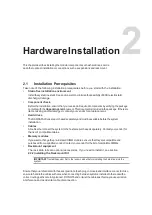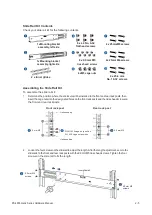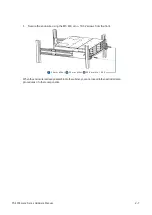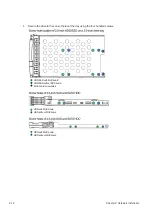
PS 4000 Gen2 Series Hardware Manual
1-13
1.5
System Monitoring Features
This section describes the different types of system monitoring features that provide the operating status
of each component.
1.5.1
Expansion Enclosure Support
Monitoring System
A managing PS
system is aware of the status of connected expansion system’s components such as:
•
Expander controller (presence, voltage, and thermal readings)
•
PSU/Cooling module
•
Enclosure thermal sensor
•
Service (the Service LED signals the specific enclosure)
•
Hard disk drives
Expansion System Identifier
The managing system sets off the alarm and delivers the warning messages if there is a conflict
between the expansion systems.
If more than one expansion system is connected to the managing PS system, each needs a unique
enclosure ID set using the rotary switch on the LED panel. For example, the firmware automatically
disconnects the second expansion system if it is connected online and comes with an ID identical to the
first expansion system.
NOTE:
The expansion system IDs are numbers 1 to 15. For more details, see section
2.3.6 Expansion Connections
.
Cooling Module Speed Adjustment
If any of the detected temperature readings breaches the temperature threshold, the firmware running
on the managing PS system automatically increases the rotation speed of all cooling fans.
Expansion Enclosure Status Monitoring
The system connecting with expansion systems (JBOD) can acquire the component status with other
enclosures via a proprietary enclosure monitoring service using the in-band connectivity. No additional
management connection is required.
I
2
C Bus
The detection circuitry and temperature sensors are interfaced via a non-user-serviceable I
2
C bus.
When the expansion systems are connected to PS controllers, the component status is reported through
in-band protocols over expansion links, which is managed by a proprietary enclosure service.
Firmware (FW) and PAC Management Software
•
Firmware (FW):
The firmware is preloaded and is used to configure the system. Access the FW via
a terminal emulation program running on a management computer connected to the
system’s serial
port.
















































